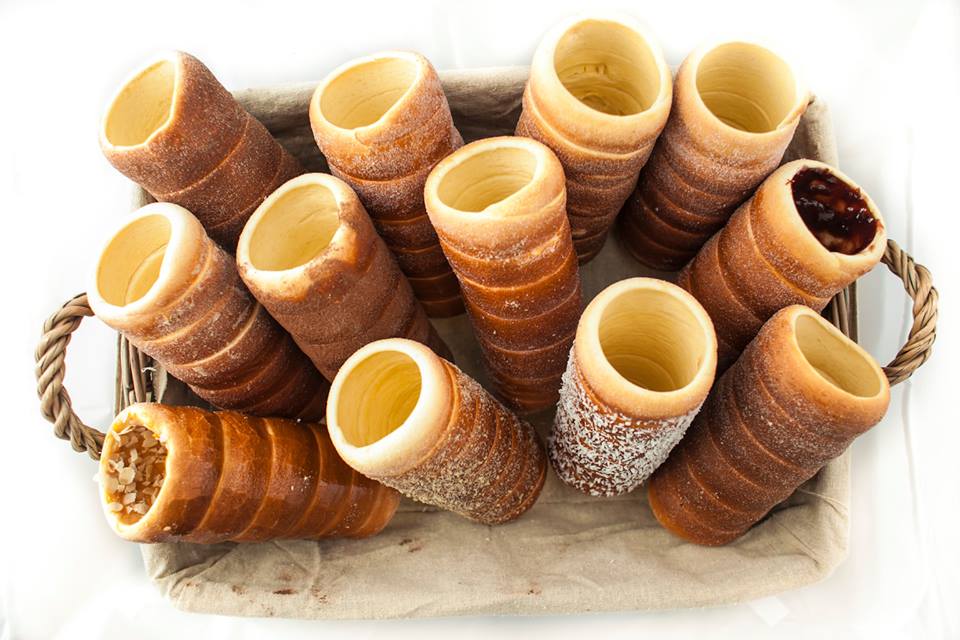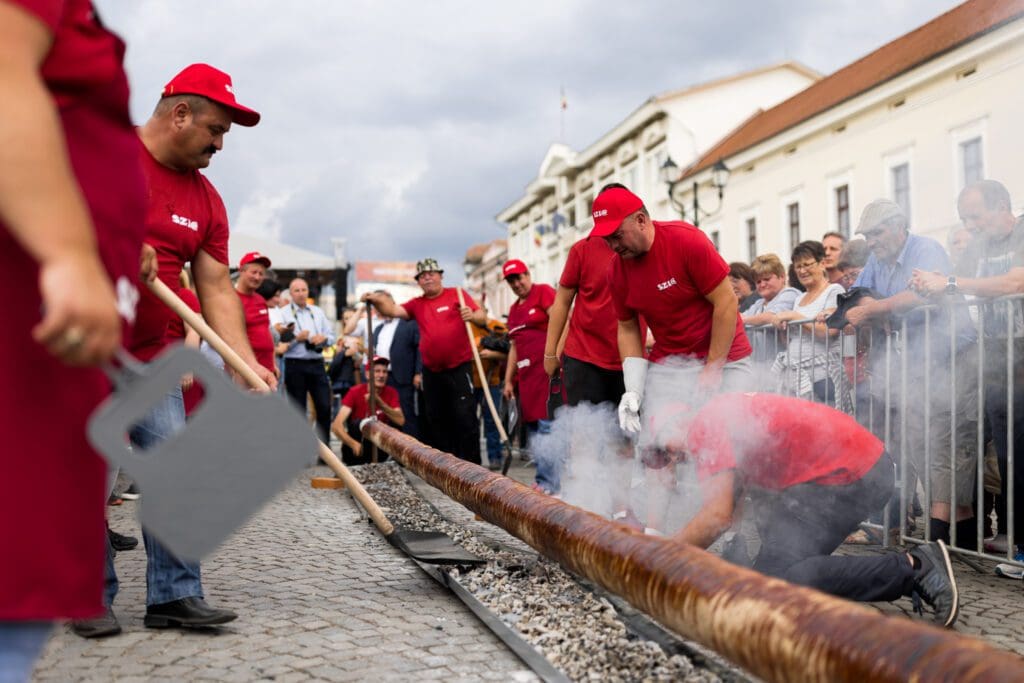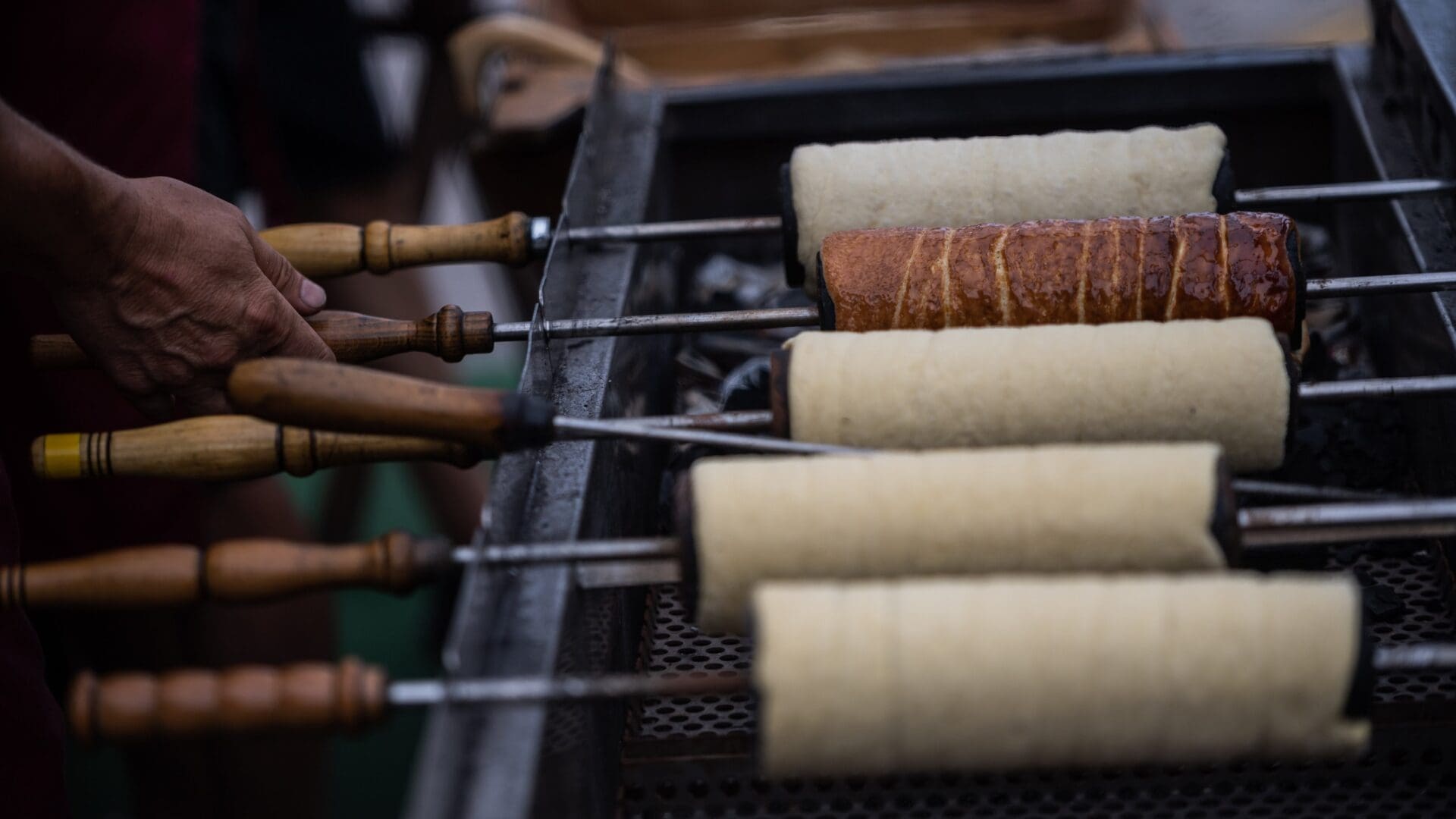Hungarian cuisine is famous for many delicious dishes and traditional foods—but perhaps none of them is as mouth-watering as the kürtőskalács. Albeit maybe not as well-known and widely associated with Hungary as the gulyás soup (goulash), kürtőskalács is intuitively discovered by all tourists who visit Budapest due to its irresistible sweet aroma that lingers in the air near metro stations, as well as in public spaces where this delicacy is baked using charcoal. But what is kürtőskalács exactly, and where does it come from?

The Hungarian kürtőskalács is a type of spit cake: a pastry made of layers of dough and baked on open fire or in an oven on a rotating spit. Different varieties of spit cakes include the Austrian Prügelkrapfen, the German Baumkuchen, the Swedish spettekaka, while the Czech trdelník is the closest relative of the Hungarian kürtőskalács.
As Hungary holds kürtőskalács to be one of the most authentic manifestations of Hungarian cuisine, it was inscribed into the list of Hungarikums in 2015. The name ‘kürtőskalács’ consists of two words, ‘kürtő’, which means stovepipe, and ‘kalács’, which means sweet bread. Kürtőskalács is translated to English as ‘chimney cake’, because its cylindrical shape reminds of a smokestack.
The kürtőskalács that enjoys great popularity today in Hungary
is originally from Transylvania, where it was prepared by the Székely (Szekler) Hungarians.
The first surviving recipe of the cake can be found in the cookbook of the Transylvanian Countess Mária Mikes that dates back to 1784. By the 19th century kürtőskalács was widely baked all across the Hungarian Kingdom. In the 19th and 20th centuries the popularity of the cake was boosted by the practice of sweetening and flavouring it. Cookbooks in the 1800s recommended to roll the dough into sugar before baking it, in order to caramelise the sugar during the procedure. Later, the practice of also rolling the freshly baked pastry into more sugar or walnuts also spread. Today, a large variety of chimney cakes are available, depending on what they are topped with, the most popular toppings being cinnamon, chocolate, walnuts or peanuts and shredded coconut. By now gluten-free and creatively flavoured types of kürtőskalács are also available (for instance, versions topped with pistachio, chilli, or raspberry). It is important to note that the savoury versions (albeit they exist) are not considered to be authentic. The cake that was originally made for major celebrations such as weddings, Christmas parties and christenings can now be enjoyed at any time of the year by locals and tourists visiting the country alike.
The fact that the idea of caramelising sugar on top of the pastry developed only in the 19th century explains why the Czech trdelník, flavoured only after it is baked, is not as sweet as the Hungarian kürtőskalács. Czech bakers adopted the spit cake from Hungarian sources, but before the caramelisation practice spread in Hungary. According to the legend,
Marquis and Enlightenment writer József Gvadányi brought the recipe to Slovakia in the 18th century,
from where it spread to Moravia. A specialty of the Czech trdelník, however, something not very common in Hungary, is to add ice cream and cream on top of the cake. Albeit the Czechs do not dispute the Hungarian-Transylvanian origins of the trdelník, as they are sold as a traditional Czech food, occasionally some jolly dispute takes place between Hungarians and Czechs about who can rightfully claim ownership of it. Recently a video spread on the internet of someone dressed up as a kürtőskalács in the Czech capital, in a costume that had ‘I AM NOT [A] CZECH TRADITION’ written on it, with its wearer walking around in the busiest parts of the city of Prague, raising awareness about the true origin of the cake.
I AM NOT CZECH TRADITION
Spolupracovali Anna Hubená a Danny Takieddin (studenti DAMU) #czechsoflatecapitalism #trdelnik #trdlo #praha #prague #tradition #tradice #tourism #turismus #faketraditions #capitalism #sightseeing #fyp
The longest kürtőskalács ever baked in Hungary was made in Debrecen in 2018: it was 13 metres long, and despite its impressive size, it was finished in a matter of minutes by the over 200 participants of the festival where it was made. The kürtőskalács baked in Debrecen is not the longest that was ever baked, however—in the cake’s homeland, Transylvania less than a year ago a 15-metre-long cake was baked by a team of 53 in Sepsiszentgyörgy (Sfântu Gheorge).

The pastry was baked on a special pine spit; more than 45 kilograms of flour, 10 kilograms of butter, 6 litres of oil, 20 litres of milk and 20 kilograms of sugar were used as ingredients for the 300-metre-long dough that was then rolled up.
Related articles:








